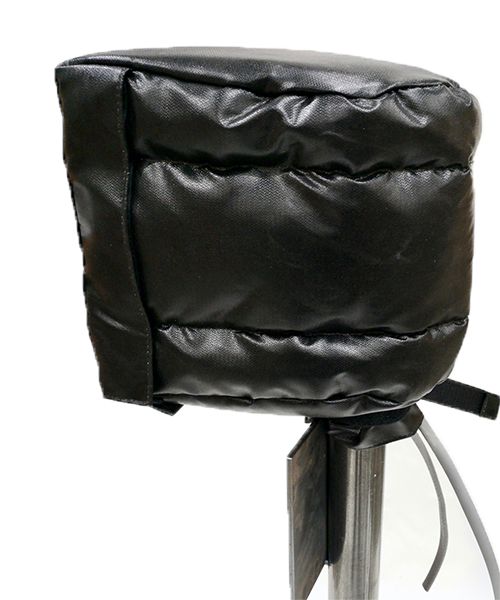
Client:
Thermotex Engineering is a family-run business which operates in the field of thermodynamics and specialises in manufacturing thermal insulation, heat tracing and protective enclosure products. Founded in 1995, this Chesterfield-based company develops and provides innovative and often bespoke solutions to clients in a wide variety of international markets, including mining and steel, power generation, food and beverage, pharmaceutical, and oil, gas and petrochemical.
The challenge:
The company develops a number of products which are intended to – or may potentially be required to – perform in particularly extreme conditions. This being the case, it is essential that the materials used in such products are proven to be capable of withstanding a variety of possible environmental conditions, not just in the short term, but also over the longer term, and one of the best ways in which this capability can be confirmed is through accelerated weathering testing.
Thermotex Engineering approached the Sheffield Innovation Programme (SIP) wanting to conduct accelerated weathering testing on the durability of a fabric material when it was exposed to cycles of freezing and thawing, UVB radiation and high temperature / relative humidity. The aim here was to provide the company with physical evidence of how the fabric coped in those conditions so that it would be in a better position to make a bid for a major project based in Arctic Russia.

What we did
In order to provide the company with the required outcome, SIP introduced the client to a team of materials science researchers who developed and employed three different accelerated weathering testing methods. The first method involved taking five samples of the fabric and exposing them to an extended sequence of freeze-thaw cycles in a climatic chamber. The second method took six different samples and exposed them to UVB radiation for 1,000 hours in a QUV accelerated weathering tester. The third method required four more samples of the fabric and to expose them to high temperature and relative humidity in a climatic chamber.
By removing individual samples at certain predetermined times (daily or weekly, depending on the method being used) they were able to provide the company with the precisely weathered materials that it needed to conduct its own damage assessment tests.
The results
The accelerated weathering testing of the fabric gave the company a range of samples for each of the three methods used. This allowed Thermotex Engineering to conduct its own in-house tests on those samples and prepare a bid that was backed by hard scientific evidence. This was particularly important for the project in question, as the company was proposing the use of a textile product, whereas most of the competing bidders were proposing the use of glass-reinforced polyester products.
‘This solution provided us with indicative product testing for unusual characteristics, access to laboratory equipment, and performance of specific tests,’ said Paige Niehues, who is the Commercial and Technical Executive at Thermotex Engineering. ‘This enabled us to generate a testing report which we can use in the future as an indication of our product performance, something which can help to give us an edge over our competitors in the future.’
Speaking about the SIP process of problem-solving in general, Ms Niehues added: ‘It was great to have help getting the appropriate testing done and help understanding what we can do for specific testing needs. Through close and consistent contact and clarity of actions for all parties, we were able to successfully complete the project and gain enough information for a successful test completion.’
